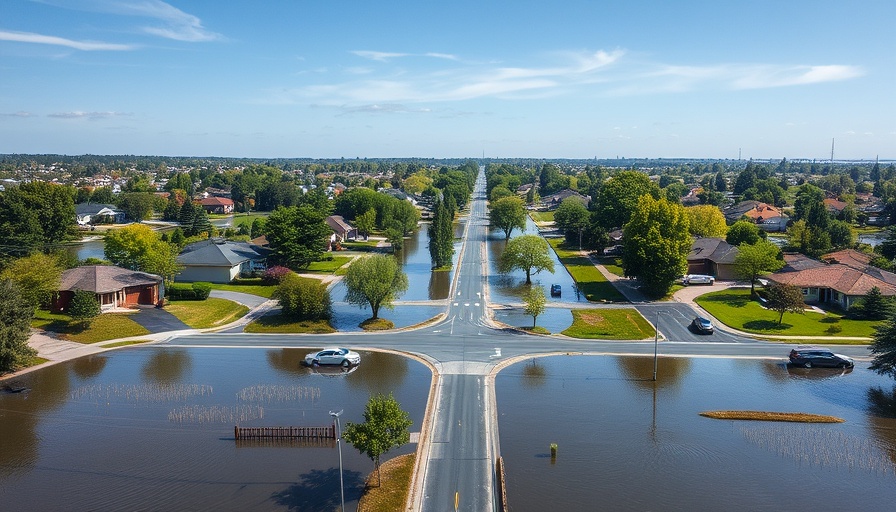
The Hidden Costs of Purchasing in Flood-Prone Areas
When considering homes for sale in flood zones, buyers must confront various financial realities. Standard home insurance policies typically do not cover flood damage, necessitating the purchase of federally-backed flood insurance, which can be expensive. For example, homes located in high-risk zones may face premiums nearing $1,200 annually, a cost that can significantly impact a household's budget. In addition to insurance costs, prospective buyers need to account for potential renovations and repairs, which can escalate following flood events.
Understanding Flood Zones
Federal Emergency Management Agency (FEMA) flood maps define the different risk levels associated with flood zones. These maps categorize areas from low to high risk, greatly influencing insurance requirements and mortgage options. It is vital for buyers to review these maps meticulously as homes situated in designated flood zones often face higher scrutiny from lenders. Furthermore, zoning laws may restrict future building plans or renovations, complicating long-term investment potential.
The Pros of Purchasing a Waterfront Home
While the challenges surrounding flood zone properties are significant, there are clear advantages. Homes by the water tend to be appealing, providing scenic views and recreational opportunities that attract buyers. Additionally, prices in flood-prone areas may start lower than comparable homes situated in safer zones, providing a more affordable entry point into desirable neighborhoods. Buyers willing to navigate the risks and responsibilities can capitalize on a unique lifestyle while building equity over time.
Essential Factors to Consider
Before making an offer on a property in a flood zone, conduct thorough research. Investigate the property’s flood history, which can highlight previous insurance claims and property damages. Moreover, speaking with neighbors and local real estate agents can offer invaluable insights into the area’s risk profile. Seeking the advice of a real estate attorney can also clarify lease terms, responsibilities, and potential liabilities tied to flooding incidents.
Lifestyle Factors: What You Gain and What You Sacrifice
Living near water often means embracing a unique lifestyle. However, the charm of waterfront living comes with sacrifices, such as the risk of property damage and lifestyle disruptions due to flooding. Potential buyers should evaluate how these challenges align with their personal goals and whether they are prepared for the lifestyle changes and responsibilities that come with owning a home in a flood-prone area. Long-term investment strategies should reflect these realities.
Long-Term Considerations and Market Trends
Real estate market trends indicate that flood zones can fluctuate in desirability depending on climate changes and local development. Buyers should watch for shifts in consumer sentiment, as increased flooding events may deter others and influence property values negatively. It’s also essential to stay updated on local infrastructure improvements aimed at flood mitigation, as these can enhance property values and livability. Consulting with real estate market analysts can further guide investment decisions.
Conclusion: Making an Informed Choice
Buying a house in a flood zone requires extensive consideration of the various risks and benefits involved. By conducting proper due diligence and carefully weighing financial implications, buyers can make informed decisions that align with their lifestyle and investment strategies. Whether you're using sites like Zillow, Redfin, or consulting with a trusted realtor, understanding the nuances of flood zones will empower you to secure a home that provides peace of mind and long-term satisfaction.
 Add Row
Add Row  Add
Add 



Write A Comment